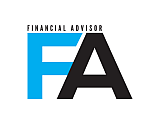
CalPERS CIO Orders Active Risk Review
“In general, one might expect that the size of CalPERS’ portfolio will make it harder to generate excess returns in almost any asset class as they are actually moving markets,” MPI President Jeff Schwartz tells CIO’s Randy Diamond in his article about the system’s active investment risk-taking review. “As such, they really need to pick their battles when it comes to identifying areas to pursue excess returns, especially on a risk-adjusted basis, given that less-efficient market segments tend to hold more risks.” Read full article here.






